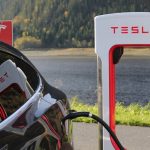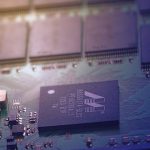Tesla’s push to tailor its electric vehicles to diverse markets has taken a defined turn with the debut of the Model Y L in China, offering a longer wheelbase and new family-focused features. Chinese drivers have been seeking more spacious options in the compact SUV segment, and this new release addresses those needs with extra interior comfort. Some industry observers believe Tesla’s move could influence competitors to prioritize vehicle length and cabin features for this sector. While the Model Y L brings subtle aesthetic changes, most updates are focused on occupant experience and operational comfort.
Initial reports about the Model Y L had centered on its extended wheelbase, but those early mentions rarely discussed interior advancements. Compared to coverage from previous months, Tesla’s latest release now integrates several new seat configurations, technology-driven conveniences, and unique detailing not previously delivered in the standard model. Recent leaks also uncovered Tesla’s intent to differentiate the China lineup, which is more apparent in the final product. These progressive enhancements suggest a more distinct regional product strategy than previously communicated by the company.
Expanded Space and Sized-Up Competition
By increasing its wheelbase to 119.7 inches (3,040 mm), the Model Y L surpasses other electric compact SUVs, including the Hyundai Ioniq 5 and Ford Mustang Mach-E in terms of length. This adjustment positions the vehicle as one of the longest available in its class, offering improved space for both passengers and cargo. As Tesla broadens its catalog, the brand aims to appeal to families requiring both electric performance and capacity. Such spatial revisions could encourage re-evaluation among buyers comparing alternatives from brands like BMW, Volkswagen, and Kia.
Interior Upgrades and Passenger Focus
The Model Y L features several cabin enhancements, including a black headliner offered for the first time in the range, as well as new front seat designs that incorporate adjustable headrests for greater comfort. The six-seat configuration introduces Captain’s Chairs in the second row, complemented by powered armrests, a step up in convenience for rear occupants. Tesla also added dedicated air vents for rear passengers, diverging from its previous approach of directing airflow solely via the main center screen. A company spokesperson commented,
The new seat and vent arrangement provide individualized comfort for each occupant.
The inclusion of powered seatback adjustments for both second and third rows extends customization further for passengers.
Targeted Features for Chinese Consumers?
Tesla’s latest offerings in the Model Y L highlight equipment that resonates with Chinese consumer expectations, such as button-operated seat recline and collapse, additional cupholders, and improved entry for the vehicle’s rear-most occupants. Features like manual air vents—which are rare in other Tesla models—are seen as a response to regional feedback. Through these modifications, the automaker illustrates its intent to listen and adapt to market-specific preferences. Tesla stated,
We are committed to ensuring that Model Y L meets the expectations of families seeking spaciousness and practicality.
Competition in the compact electric SUV segment has intensified, with offerings such as the Kia EV6, Volkswagen ID.4, and Porsche Macan Electric reinforcing consumer options. Tesla’s focus, however, is on maximizing flexibility without departing from its key technology and sustainability principles. As global automakers adjust lineups to fit Asian markets, more similar adaptations are likely across the industry. The Model Y L’s new features may well attract buyers looking for extra comfort within the electric vehicle landscape.
The newly released Model Y L represents Tesla’s willingness to localize key products and build on evolving family needs in China. While extended wheelbase models have appeared before from other manufacturers in the country, Tesla’s addition of bespoke interior options sets a notable example for competitors. For buyers exploring electric SUVs in China, comparing interior features, seat configurations, and specific conveniences has become increasingly important. Consumers weighing their decision should pay attention not only to range and price but also to practicality enhancements—like seating flexibility, climate controls, and space utilization—as these elements now factor prominently in this category. The emergence of the Model Y L is a signal that flexible product strategies are taking hold in the EV sector, and discerning customers stand to benefit from these continued refinements.










